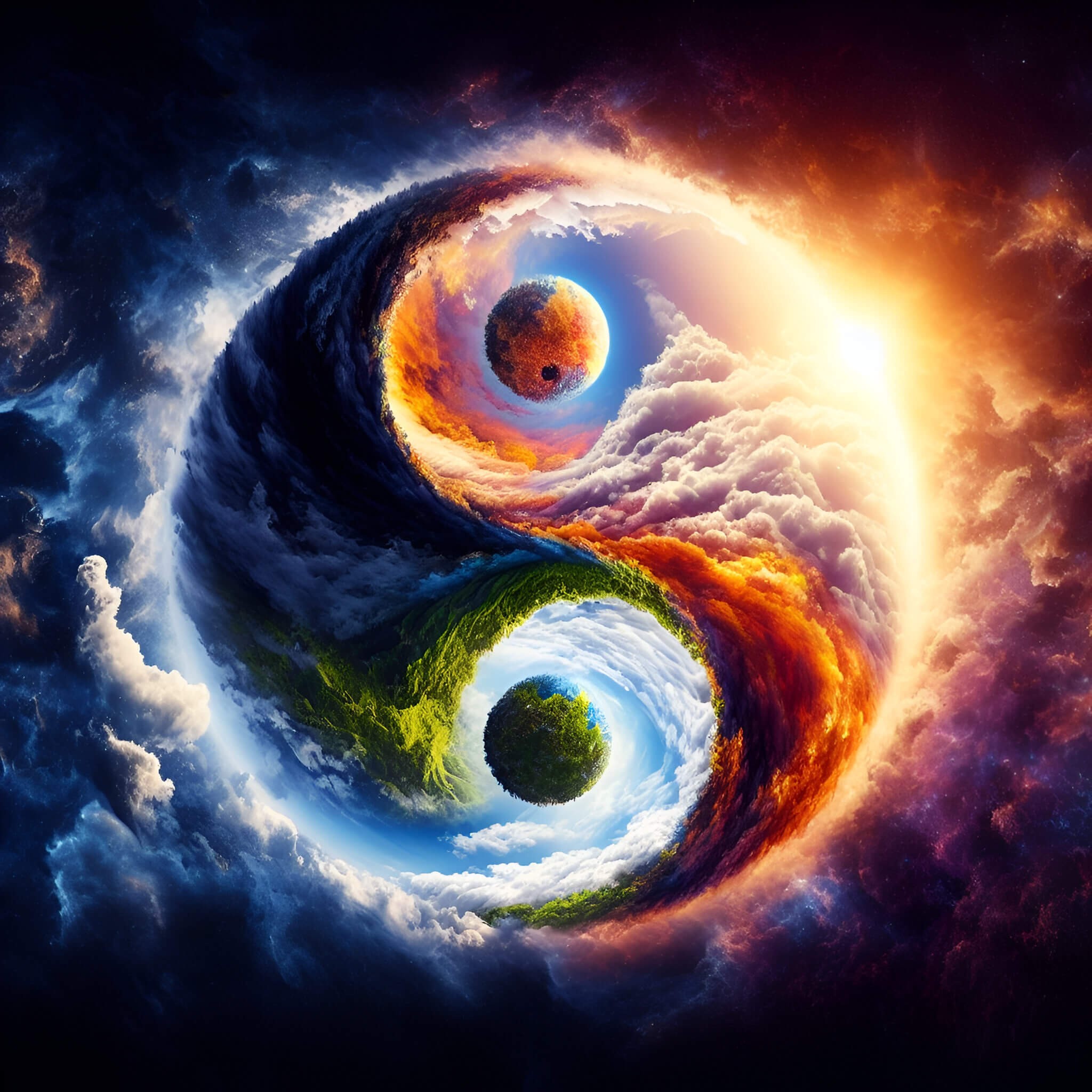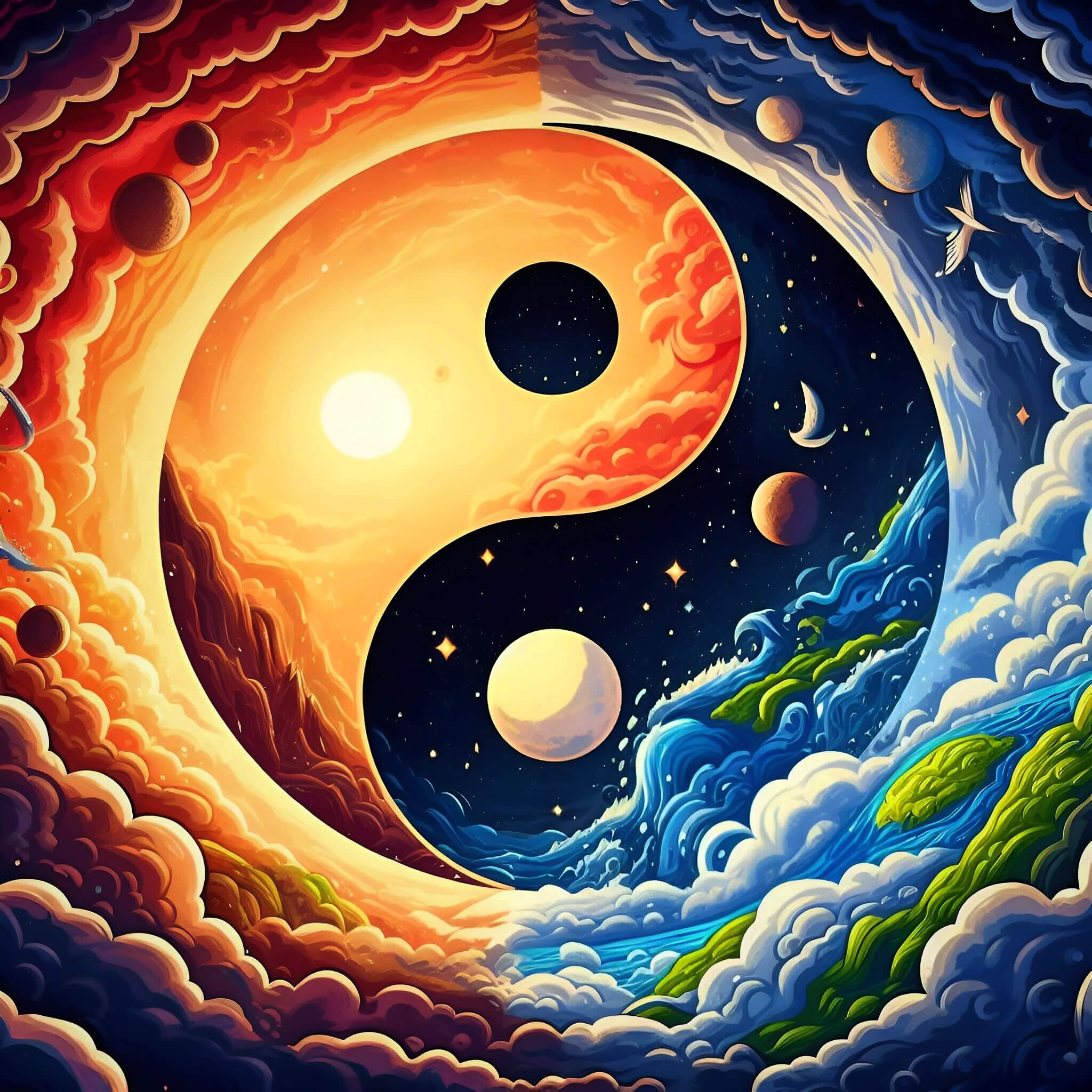
“Hsin Hsin Ming,” also known as “Faith in Mind,” is attributed to the Third Chinese Ch’an (Zen) Patriarch Seng-ts’an. This revered Zen poem delves into the essence of nonduality and the nature of reality. “Hsin Hsin Ming” articulates the path to enlightenment by emphasizing the dissolution of dualistic perceptions and the deeper understanding of existence.
Below is a public domain translation of “Hsin Hsin Ming” by D.T. Suzuki, a pioneering figure in introducing Zen to the Western world. His rendition offers insight into the wisdom encapsulated in “Faith in Mind,” inviting contemplation and a deeper understanding of Zen philosophy. Other translations of Hsin Hsin Ming may be titled “Verses of the Perfect Mind” or “The Great Way,” alluding to its Taoist influence.
Hsin Hsin Ming (“Faith in Mind”) translated by D.T. Suzuki
The Great Way is not difficult
for those who have no preferences.
When love and hate are both absent
everything becomes clear and undisguised.
Make the smallest distinction, however,
and heaven and earth are set infinitely apart.
If you wish to see the truth
then hold no opinions for or against anything.
To set up what you like against what you dislike
is the disease of the mind.
When the deep meaning of things is not understood,
the mind’s essential peace is disturbed to no avail.
The Way is perfect like vast space
where nothing is lacking and nothing is in excess.
Indeed, it is due to our choosing to accept or reject
that we do not see the true nature of things.
Live neither in the entanglements of outer things,
nor in inner feelings of emptiness.
Be serene in the oneness of things
and such erroneous views will disappear by themselves.
When you try to stop activity to achieve passivity,
your very effort fills you with activity.
As long as you remain in one extreme or the other,
you will never know Oneness.
Those who do not live in the single Way
fail in both activity and passivity,
assertion and denial.

To deny the reality of things
is to miss their reality;
to assert the emptiness of things
is to miss their reality.
The more you talk and think about it,
the further you wander from the truth.
Stop talking and thinking,
and there is nothing you will not be able to know.
To return to the root is to find the meaning,
but to pursue appearances is to miss the source.
At the moment of inner enlightenment,
there is a going beyond appearances and emptiness.
The changes that appear to occur in the empty world
we call real only because of our ignorance.
Do not search for the truth;
only cease to cherish opinions.
Do not remain in the dualistic state;
avoid such pursuits carefully.
If there is even a trace of this and that,
of right and wrong,
the mind-essence will be lost in confusion.
Although all dualities come from the One,
do not be attached even to this One.
When the mind exists undisturbed in the Way,
nothing in the world can offend,
and when a thing can no longer offend,
it ceases to exist in the old way.
When no discriminating thoughts arise,
the old mind ceases to exist.
When thought objects vanish,
the thinking-subject vanishes,
as when the mind vanishes, objects vanish.
Things are objects because of the subject (mind);
the mind (subject) is such because of things (objects).
Understand the relativity of these two
and the basic reality: the unity of emptiness.
In this Emptiness, the two are indistinguishable
and each contains in itself the whole world.
If you do not discriminate between coarse and fine,
you will not be tempted to prejudice and opinion.
To live in the Great Way is neither easy nor difficult,
but those with limited views are fearful and irresolute:
the faster they hurry, the slower they go,
and clinging cannot be limited;
even to be attached to the idea of enlightenment is to go astray.
Just let things be in their own way
and there will be neither coming nor going.
Obey the nature of things (your own nature)
and you will walk freely and undisturbed.

When the thought is in bondage, the truth is hidden,
for everything is murky and unclear.
And the burdensome practice of judging
brings annoyance and weariness.
What benefit can be derived
from distinctions and separations?
If you wish to move in the One Way,
do not dislike even the world of senses and ideas.
Indeed, to accept them fully
is identical with true enlightenment.
The wise person attaches to no goals
but the foolish person fetters themselves.
There is one Dharma, without differentiation.
Distinctions arise from the clinging needs of the ignorant.
To seek Mind with the (discriminating) mind
is the greatest of all mistakes.
Rest and unrest derive from illusion;
with enlightenment, there is no liking and disliking.
All dualities come from ignorant inference.
They are like dreams or flowers in air –
foolish to try to grasp them.
Gain and loss, right and wrong:
such thoughts must finally be abolished at once.
If the eye never sleeps,
all dreams will naturally cease.
If the mind makes no discriminations,
the ten thousand things are as they are, of single essence.
To understand the mystery of this One-essence
is to be released from all entanglements.
When all things are seen equally
the timeless Self-essence is reached.
No comparisons or analogies are possible
in this causeless, relationless state.
Consider movement stationary
and the stationary in motion,
both movement and rest disappear.
When such dualities cease to exist
oneness itself cannot exist.
To this ultimate finality no law or description applies.
For the unified mind in accord with the Way
all self-centered striving ceases.
Doubts and irresolutions vanish
and life in true faith is possible.
With a single stroke, we are freed from bondage;
nothing clings to us and we hold to nothing.
All is empty, clear, self-illuminating,
with no exertion of the mind’s power.
Here, thought, feeling, knowledge, and imagination are of no value.
In this world of Suchness
there is neither self nor other-than-self.

To come directly into harmony with this reality,
just say when doubt rises, “Not two.”
In this “not two” nothing is separate,
nothing is excluded.
No matter when or where,
enlightenment means entering this truth.
And this truth is beyond extension or diminution in time or space;
in it a single thought is ten thousand years.
Emptiness here, emptiness there,
but the infinite universe stands always before your eyes.
Infinitely large and infinitely small;
no difference, for definitions have vanished and no boundaries are seen.
So, too, with Being and non-Being.
Don’t waste time in doubts and arguments
that have nothing to do with this.
One thing, all things:
move among and intermingle, without distinction.
To live in this realization
is to be without anxiety about non-perfection.
To live in this faith is the road to non-duality,
because the non-dual is one with the trusting mind.
Words! The Way is beyond language,
for in it there is no yesterday,
no tomorrow, no today.
This version, translated by D.T. Suzuki, is a public domain translation and offers a glimpse into the wisdom conveyed in the “Hsin Hsin Ming.” See also the full text of Tao Te Ching by Lao Tzu.

